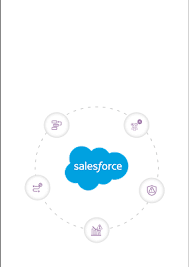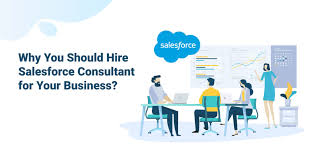Bringing in a Salesforce consultant in Seattle gives your business real, hands-on guidance for using Salesforce the way it was meant to be used. Let’s be honest, a lot of companies hit roadblocks with CRM setup, automation, or just getting different tools to talk to each other. A good consultant cuts through the hassle, streamlines your workflows, and makes life easier for both your team and your customers. In a city like Seattle, where tech moves fast, having your CRM dialed in can set you apart from the crowd.
Why Seattle Businesses Need Salesforce Know-How
Seattle’s packed with startups, established tech firms, and big enterprises, all relying on clean data and smart automation. That’s why local Salesforce expertise matters so much. A consultant here gets the pace, knows what local businesses expect, and understands what it takes to keep up.
Here’s what the right consultant brings to the table.
- Faster, Smoother Salesforce Setup
Setting up Salesforce isn’t a quick task. It takes planning, time, and plenty of technical skill. Many teams try to wing it themselves and end up spinning their wheels. That’s where experienced Seattle consultants really shine. They handle the heavy lifting, speed things up, and make sure everything lines up with your goals. From the first setup to final testing, things just run smoother.
- CRM Customization That Actually Fits
Every business has its own rhythm. A great Salesforce consultant builds your CRM around the way you work, not the other way around. Whether you’re in tech, e-commerce, finance, logistics, or healthcare, they’ll tailor the system so it feels natural for your team.
A solid Seattle consultant can set up dashboards, create custom fields, build automation, and map out user journeys that fit your business like a glove.
- Cleaner Data, Better Reporting
Data drives your decisions. A consultant helps you clean up your current data, squash duplicates, set up validation so bad data doesn’t sneak in, and build clear reports and dashboards.
Your leadership team gets the real-time numbers they need—no guesswork, no messy spreadsheets.
- Automation That Actually Saves Time
Automation isn’t just a buzzword; it’s about making your day easier. An experienced Salesforce developer in Seattle can set up workflows that assign leads, trigger follow-ups, schedule tasks, and keep deals moving.
Your team gets more done, fewer mistakes happen, and your process stays on track.
- Seamless Integration With Your Favorite Tools
Seattle businesses run on tools like Slack, AWS, Shopify, HubSpot, Jira, and analytics platforms—you name it. Your Salesforce setup should work with all of them. A consultant connects these dots, keeps everything stable, and makes sure your data stays secure.
You get rid of manual data entry and finally see your business all in one place.
- Ongoing Support—No More Getting Stuck
Once Salesforce is up and running, you’ll want regular support. A Seattle consultant’s got your back with troubleshooting, new features, user training, and system upgrades.
Your CRM keeps evolving with your business, not holding you back.
- Better Team Buy-In and Training
A CRM isn’t worth much if nobody uses it. Consultants lead training, write up guides, and help your team actually get comfortable with the system.
People start using Salesforce the way it’s meant to be used—every day, not just when they have to.
Final Thoughts
Hiring a Salesforce consultant in Seattle gives your business a real edge. You get efficient workflows, cleaner data, smart automation, and support you can count on—all without having to juggle everything yourself. In a city that never stops moving, a solid CRM foundation helps your business grow and stay ahead.




